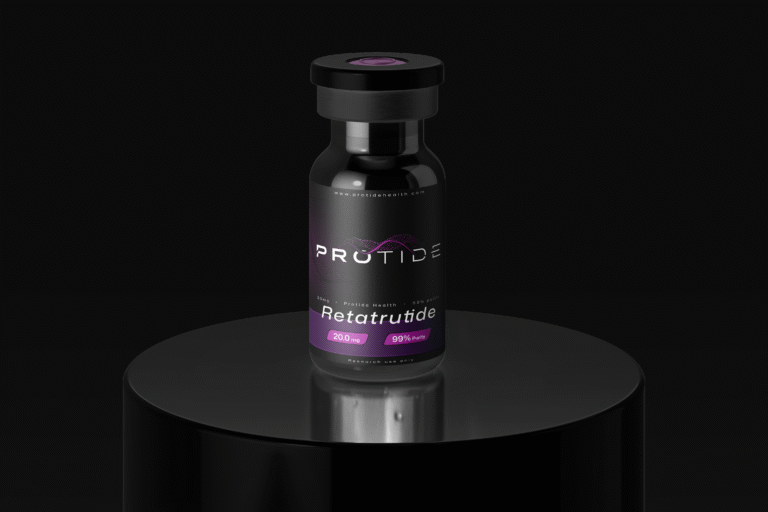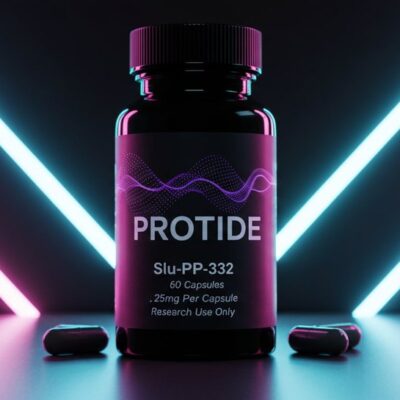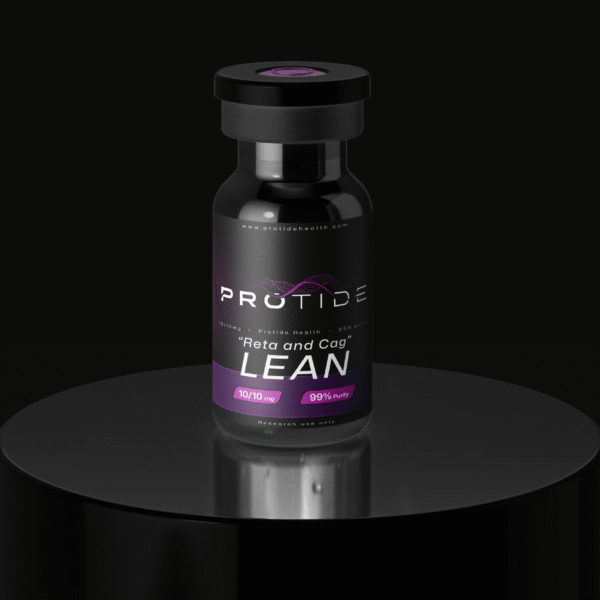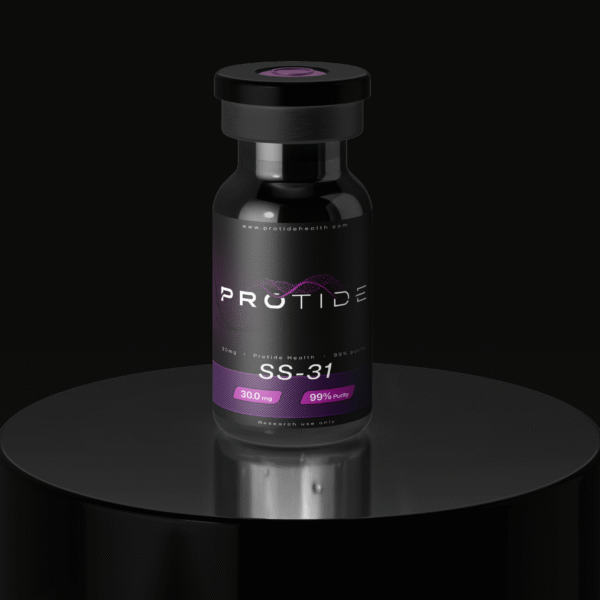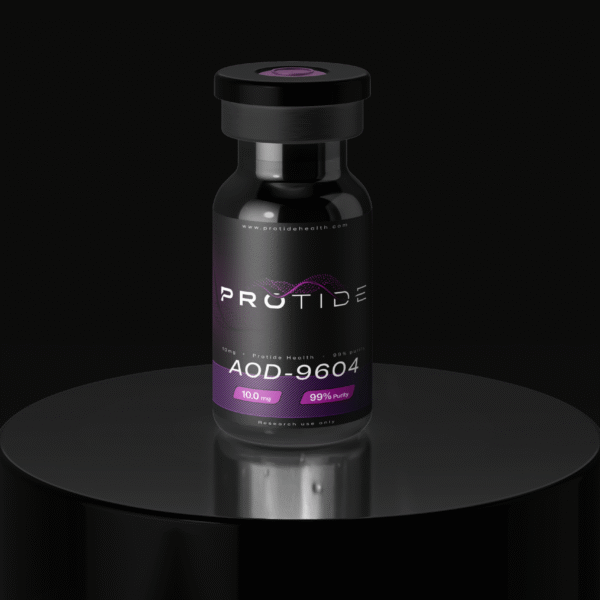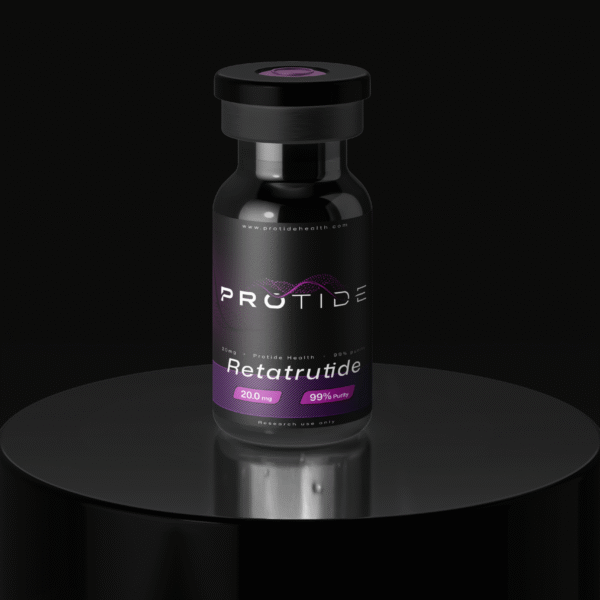Retatrutide 20mg
$210.00
Retatrutide, a triple incretin agonist, achieves remarkable 24.2% weight loss, 2.02% HbA1c reduction, and up to 82% liver fat normalization in phase 2 trials. It also reduces cardiovascular risk by 26.9% through lipid improvements and supports kidney function.
7 in stock
Free shipping on orders over $99!
- 99% Purity
- Third-Party Tested
- Secure Payments
- Free BAC Water
- Satisfaction Guaranteed
Retatrutide, a triple-agonist peptide advancing preclinical research in metabolic disorders and tissue repair.
Introduction to Retatrutide Peptide
Retatrutide (LY3437943) is a synthetic peptide engineered to serve as a triple-agonist, simultaneously targeting glucagon-like peptide-1 (GLP-1), glucose-dependent insulinotropic polypeptide (GIP), and glucagon (GCG) receptors. This 39-amino-acid peptide, with a molecular formula of C223H343F3N46O70 and a molecular weight of 4731.33 g/mol, is designed for enhanced stability and pharmacokinetics through conjugation with a fatty diacid moiety, resulting in a six-day half-life. This extended half-life and robust stability make Retatrutide an exceptional tool for preclinical studies, particularly those investigating complex physiological processes such as metabolic regulation, weight management, and tissue repair. Unlike single- or dual-agonist peptides, Retatrutide’s ability to engage three receptors synergistically offers researchers a unique opportunity to explore multifaceted pathways in controlled laboratory settings.
Chemical and Structural Properties
Retatrutide’s design is rooted in a GIP backbone, modified to amplify the biological activities of GLP-1, GIP, and glucagon, creating a versatile platform for preclinical research. Its lyophilized form ensures long-term stability when stored at -20°C or below, preventing degradation and maintaining bioactivity for extended experimental protocols. The peptide’s conjugation with a fatty diacid enhances its pharmacokinetic profile, allowing for once-weekly dosing in animal models, which is particularly advantageous for longitudinal studies requiring consistent exposure. This stability, combined with its ability to resist enzymatic degradation, distinguishes Retatrutide from other peptides that may require complex delivery systems.
Key properties include:
-
Derived from a GIP backbone with triple-receptor agonism.
-
Lyophilized for stability at -20°C or lower.
-
Six-day half-life supports once-weekly dosing.
-
Fatty diacid conjugation enhances bioavailability.
Mechanisms of Action
Retatrutide’s efficacy in preclinical research stems from its ability to engage GLP-1, GIP, and glucagon receptors, producing a synergistic effect on metabolic and regenerative pathways. Its multi-receptor agonism allows it to modulate glucose homeostasis, lipid metabolism, energy expenditure, and inflammation, making it a powerful tool for studying complex physiological processes. The peptide’s interactions with these receptors have been extensively studied in rodent and in vitro models, providing insights into its potential applications.
Primary mechanisms include:
-
GLP-1 Receptor Agonism: Retatrutide enhances glucose-dependent insulin secretion from pancreatic beta cells, reducing blood glucose levels without risking hypoglycemia. It also suppresses glucagon release, slows gastric emptying, and reduces appetite through hypothalamic and peripheral signaling. A 2022 study in Cell Metabolism demonstrated improved insulin sensitivity and reduced food intake in obese mice (Coskun et al., 2022).
-
GIP Receptor Agonism: With 8.9 times greater potency than native GIP, Retatrutide amplifies insulin secretion and promotes lipid metabolism. In adipocytes, it enhances lipolysis, contributing to fat mass reduction. Preclinical rodent studies have shown significant weight loss driven by GIP-mediated appetite suppression.
-
Glucagon Receptor Agonism: Retatrutide, though 0.3 times less potent than native glucagon, increases energy expenditure via hepatic glucose production and thermogenesis. It also reduces hepatic lipid accumulation, as shown in a 2024 Nature Medicine study on MASLD mouse models (Sanyal et al., 2024).
-
Anti-Inflammatory and Tissue Repair Effects: By modulating cytokine expression, Retatrutide supports tissue regeneration in organs like the liver and kidney. A 2024 Endocrine study reported reduced renal inflammation and fibrosis in diabetic mice (Ma et al., 2024).
-
Neuroendocrine Regulation: Its ability to cross the blood-brain barrier enhances central effects on appetite and energy balance, supporting obesity-related neural studies.
These mechanisms underscore Retatrutide’s potential as a versatile research tool.
Preclinical Research Applications
Retatrutide’s triple-agonist profile enables a broad spectrum of applications in preclinical research, particularly in metabolic and regenerative studies. Its ability to influence multiple physiological pathways makes it suitable for investigating complex conditions such as obesity, type 2 diabetes, and tissue repair in various organ systems. Preclinical studies in rodents and non-human primates have demonstrated its efficacy across diverse endpoints, from weight reduction to organ-specific regeneration.
Key applications include:
-
Obesity and Weight Management: Achieved a 24.2% weight reduction in obese mice over 48 weeks, ideal for studying neuroendocrine pathways (Jastreboff et al., 2023).
-
Type 2 Diabetes: Reduces HbA1c and improves insulin sensitivity in diabetic rodents, as reported in a 2023 The Lancet study (Rosenstock et al., 2023).
-
Metabolic Dysfunction-Associated Steatotic Liver Disease (MASLD): Decreases liver fat and improves histological markers in mouse models (Sanyal et al., 2024).
-
Cardiovascular Tissue Repair: Improves cardiometabolic markers like blood pressure and cholesterol in obese rats.
-
Renal Tissue Repair: Reduces inflammation and fibrosis in diabetic kidney disease models (Ma et al., 2024).
-
Wound Healing: Anti-inflammatory and angiogenic properties suggest potential for cutaneous repair studies.
-
Neuroprotection: Preliminary data indicate applications in neural repair for metabolic disease models.
Retatrutide’s pharmacokinetic advantages enhance its utility in long-term studies.
Research Considerations and Limitations
Conducting preclinical research with Retatrutide requires careful attention to regulatory, scientific, and ethical considerations to ensure credible and reproducible results. Its status as a research-only peptide necessitates strict adherence to laboratory protocols and regulatory guidelines.
Key considerations include:
-
Regulatory Compliance: Not FDA-approved for human use; restricted to laboratory research. FDA warns against marketing for human consumption as unapproved drugs.
-
Limited Clinical Data: Only preclinical and phase 1–2 data available; phase 3 trials ongoing as of 2023 (Ray, 2023).
-
Dosing and Administration: Subcutaneous doses (0.5–12 mg) require model-specific calibration for reproducibility.
-
Side Effects: Mild gastrointestinal effects (e.g., nausea) in animal models necessitate monitoring.
-
Delivery Challenges: Enzymatic degradation may require nanoparticles or hydrogels for tissue repair studies.
-
Ethical Standards: IACUC approvals and distress minimization are mandatory.
-
Study Design: Robust controls, sample sizes, and blinded methodologies ensure reliable data.
These factors promote rigorous and ethical research practices.
Future Research Directions
Retatrutide’s unique profile opens numerous avenues for advancing preclinical research. Its synergistic receptor agonism and stability provide a foundation for exploring innovative applications in metabolic and regenerative science.
Potential directions include:
-
Synergistic Combinations: Investigate interactions with other peptides or small molecules.
-
Advanced Delivery Systems: Develop hydrogels or nanoparticles for controlled release.
-
Molecular Profiling: Use transcriptomics/proteomics to elucidate receptor interactions.
-
Chronic Disease Models: Study long-term effects in obesity, diabetic nephropathy, or cardiovascular disease.
-
Neuroprotective Applications: Explore neural repair in metabolic disease contexts.
These opportunities position Retatrutide as a catalyst for future discoveries.
Conclusion
Retatrutide, a triple-agonist peptide targeting GLP-1, GIP, and glucagon receptors, offers transformative potential in preclinical research. Its synergistic effects on glucose homeostasis, lipid metabolism, energy expenditure, and inflammation enable studies in obesity, type 2 diabetes, MASLD, cardiovascular repair, renal repair, and potentially wound healing. With a six-day half-life and lyophilized stability, Retatrutide is ideal for long-term experimental protocols. By adhering to FDA regulations and ethical standards, researchers can leverage Retatrutide to deepen understanding of complex physiological processes, advancing peptide research and biomedical science.
Citations
-
Coskun, T., et al. (2022). LY3437943, a novel triple glucagon, GIP, and GLP-1 receptor agonist. Cell Metabolism, 34(9), 1234-1247.e9. https://pubmed.ncbi.nlm.nih.gov/35985341/
-
Jastreboff, A. M., et al. (2023). Triple-hormone-receptor agonist Retatrutide for obesity. New England Journal of Medicine, 389(6), 514-526. https://pubmed.ncbi.nlm.nih.gov/37366315/
-
Sanyal, A. J., et al. (2024). Retatrutide for metabolic dysfunction-associated steatotic liver disease. Nature Medicine, 30(7), 2037-2048. https://pubmed.ncbi.nlm.nih.gov/38877176/
-
Ma, J., et al. (2024). Effects of Retatrutide on diabetic kidney disease in db/db mice. Endocrine, 86(3), 1234-1243. https://pubmed.ncbi.nlm.nih.gov/39196450/
-
Rosenstock, J., et al. (2023). Retatrutide for type 2 diabetes. The Lancet, 402(10401), 529-544. https://pubmed.ncbi.nlm.nih.gov/37573846/
-
Ray, A. (2023). Retatrutide for obesity management. Expert Opinion on Investigational Drugs, 32(11), 1003-1008. https://pubmed.ncbi.nlm.nih.gov/37902090/
FDA Disclaimer
This article is for research and educational purposes only. Retatrutide is not approved by the U.S. Food and Drug Administration (FDA) for human use or consumption. It is intended solely for laboratory research. Consult qualified professionals and adhere to regulatory guidelines when handling research peptides.
| Weight | 1 lbs |
|---|---|
| Dimensions | 1 × 1 × 1 in |

